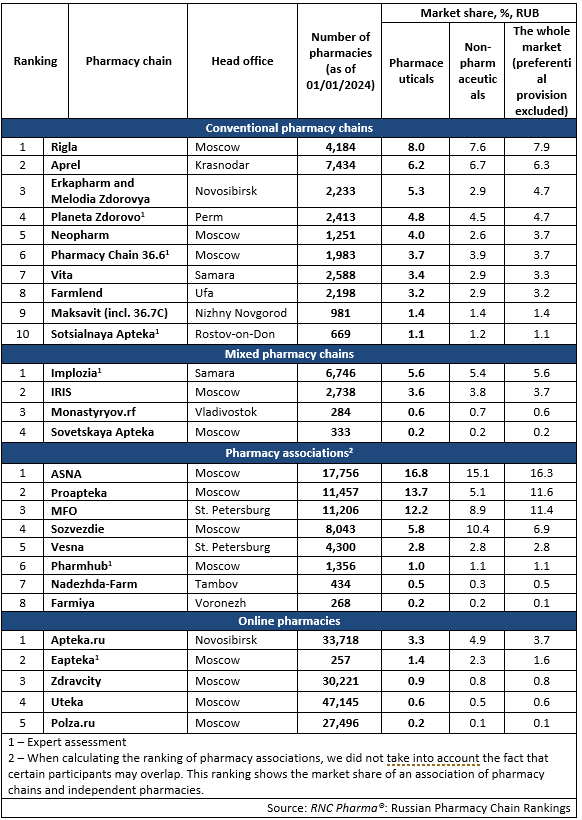RNC Pharma: Russian Pharma Retail Ready to Resume Investing Activities
In 2023, the revenue of the Russian pharmaceutical retail market in the drug category grew 7.7% from 2022, which is rather modest compared to 2020 or 2022. However, this result is still significant for the market, since it is noticeably higher than the inflation rate in the industry (6.1%, according to Rosstat), meaning that consumption has started growing again. Moreover, the public sector stagnated last year, which should make the retail market more interesting for investments, provided that this trend will last long. Still, the peak of the crisis seems to have ended, making way for an upward trend, with the household incomes growing 5.4% from 2022.
Those investments range from infrastructure development, including new association development, to a wider product range, all of which was demonstrated by various market participants last year. After the summer failure, the Russian pharmaceutical resumed its development of basic infrastructure—as of December 2023, around 80,700 pharmacies were operating in Russia, up 2,600 from December 2022. In particular, the number of pharmacies within the Aprel pharmacy chain went up 2,062 from 2022. Aprel is followed by Rigla—its number of pharmacies grew by 523. All market participants worked on their online channels, with Puls having one of the best progresses with its online pharmacy Polza.ru.
As for product expansion, the market does not seem to be working on it very actively. However, SojuzPharma made another proposal to allow the sale of veterinary drugs in pharmacies last fall; the lobbyists made their first attempt back in 2021. This idea is far from enticing: the retail sales of veterinary drugs 2023 was 35.3 billion rubles—around 1.5% of the Russian pharmaceutical retail market, and only between 15 and 60 brands can be of interest to pharmacies. Financially, this is unlikely to be interesting to market participants. Considering that this initiative will mark the end of veterinary pharmacies, the idea is rather dubious.
The next interesting initiative has an even longer history; in particular, the proposal of mobile pharmacies, which the State Duma of the Russian Federation is to consider at the spring session of 2024. Another similar initiative proposes that local hospitals be granted the right to sell drugs. It is not yet clear whether the financial aspect of those proposals was considered—it is a lot more extensive that it may seem. Those proposals look like bad surrogates for the long-established format of online sales. A year into the experiment, customers see the online sale of pharmaceuticals, with all the legal restrictions, like an exciting quest rather than a working tool.
Tab. Top pharmacy chains in the Russian pharmaceutical retail market (2023)

 Рус
Рус




